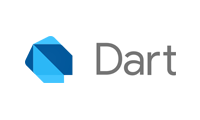 Flutter is a software, developed and supported by Google, used to build of mobile and web applications faster and more efficiently. It is a part of the latest multi-platform technology, which is becoming increasingly popular.
Flutter is a software, developed and supported by Google, used to build of mobile and web applications faster and more efficiently. It is a part of the latest multi-platform technology, which is becoming increasingly popular.
Flutter technology allows for creating native, cross-platform apps using a single code base. It assures a smooth development process and a multi-channel user experience both for web and mobile applications.
Moreover, this software development kit (SDK) is designed to create cross-platform apps from a single code base by using a modern, reactive framework. Apps are made with Flutter are built on Dart - a simple object-oriented programming language.
The main point of Flutter development is widgets. The entire user interface is a combination of different widgets, each of which defines a structural element (e.g., button or menu), stylistic element (e.g., font or color scheme), layout part (e.g., padding) and many more. Flutter does not use OEM widgets but provides its own ready-made ones that look native to Android (Material Design) or iOS (Cupertino) apps. There is also a possibility to create customized widgets.
Why use Flutter?
Mobile application development for companies
One of the benefits of Flutter development is the speed of development of the user interface. As we have already mentioned, widgets and the Hot Reload function allow for creating a project that is not limited by technology. Because Flutter provides a full control over interface design, a developer can build an amazing graphic layer. The high quality of user interfaces is the same on iOS and Android platforms.
Flutter app development software offers a wide range of features that can speed up the mobile app development process.
Performance similar to native one. One of the main advantages of Flutter application development is its performance. The Skia graphics engine, used within the app, allows smooth integration with the mobile operating system platform and quick rendering of graphics. Moreover, the Dart programming language uses its own widgets, so the application has fewer points of contact with the platform. It results in faster application launch.
Case Study: LOTTO's new mobile application
Multi-platform development. Cross-platform programming provides the possibility of using a single code base to create apps for both iOS and Android, saving time and resources. This feature allows for keeping a budget. That is because Flutter, app development kit, is a software that requires only few developers to create an application. Another important aspect is the saving of time with the use of hot reload function. The changes that are made in the code are visible instantly, which, in turn, allows for quick modifications without having to restart the Flutter development app.
Free open-source toolkit. The Google team develops and are open source Flutter app and Dart programming language. Google provides ongoing support for both of these technologies, and the tool community allows for extensive documentation. As a result, the software allows for creating beautiful and comprehensive Flutter apps quickly.
Access to phone functions. Thanks to the mobile device communication channels, can use the address book, camera, Bluetooth technology, and GPS.
Flutter has won the hearts of its users with the efficiency, uniqueness, and smoothness. According to the statistics, about 42% of programmers around the world choose Flutter. As a result, it has become the most popular framework for creating multi-platform mobile applications
Flexible user interface in Flutter app development
Widgets are like fundaments in Flutter application development. Each element is a brick forming it. A widget may be visible (button or form) and invisible (column or row) used to define the layout structure.
A significant advantage of Flutter app development is that it offers a lot of ready-made components that allow for the easy designing of beautiful applications. Building from widgets is remarkably similar to building from blocks, each element can be combined into larger segments.
Another advantage of Flutter mobile app development is the possibility for developers to access the lowest code level, on which they can create new widgets tailored to user's needs. It is possible with the same tools the Flutter app development company used to build the default widgets.
The widgets from the Flutter app are built using a modern development platform that draws inspiration from React. Widgets describe how their view should look, with a view to their current configuration and status. When the widget status changes, the description is modified.
Case Study: mCommerce application with a catalog of 2.5 million products
There are two types of widgets:
- Stateless – which does not have its own state, so it is unchangeable.
- Stateful – which may have a state of which it is dependent. Each time the widget status changes, it is rebuilt with a modification.
Flutter app development comes with a set of powerful basic widgets; The commonly used ones are:
- Text - which makes it possible to create a stylized text in the app.
- Row, Column - which allow for creating flexible layouts both vertically and horizontally.
- Stack - which allows for making a layer of widgets by putting them on top of each other. There is also a widget "Positioned" to be used on child items to position them against the top, right, bottom, or left edge of the stack.
- Container - which provides the possibility of creating a rectangular-shaped visual element. The Container can be decorated with BoxDecoration such as background, border, and shadow. It may also contain margins, padding, and size.
Hot Reload in Flutter development
In addition to an enormous range of widgets, Flutter web development of apps offers a Hot Reload feature that increases the productivity of the application development process. The Hot Reload function allows developers to see the before-made changes in real time, resulting in faster and more accurate coding.
This feature assures quick and easy building of user interface, adding features, and fixing bugs. Hot Reload implements the updated source code directly into the running Dart VM. All the changes are applied during the operation. When the VM updates the classes with new field and feature versions, the Flutter structure automatically rebuilds the widget tree, allowing for instantly viewing the effects of changes.

Dart - programming language
Dart is a programming language used in Flutter apps. It is compiled into a native code, ensuring excellent application performance and giving, users a smooth, failure-free, and native application environment. What is more, Flutter apps work on different platforms using the same code, which speeds up the creation and development process. From Flutter the native Activity or UIViewController can be displayed.
Dart is a customer-optimized language for quickly creating apps on any platform. TIts creators aimed to offer the most productive language for cross-platform programming and a flexible execution platform for application structures.
Dart is also the basic of Flutter app development. It provides the language and runtimes that power Flutter apps. However, Dart supports many basic development tasks, such as formatting, analayzing, and code testing.
Dart has a rich set of core libraries, which provide the necessary elements for many daily programming tasks:
- Built-in types, collections, and other basic features for each Dart program
- Richer collection types such as Queues, Lists, Maps, and Sets
- Encoders and decoders for conversion between different data representations, including JSON and UTF-8
- Constants and mathematical functions and random number generation
- Support for files, sockets, HTTP, and other non-web applications
- Supports asynchronous programming with classes such as Future
- Foreign function interfaces to interact with C language libraries
- Simultaneous programming with the use of isolates
- HTML elements and other resources for web applications that must interact with the browser and the DOM (Document Object Model)
Flutter technology development
The first version of Flutter, web development kit for appllications, was announced in 2015 at the Dart Developer Summit under the brand name "Ski". It made it possible to create applications for the Android mobile operating system.
The improved version of Flutter 1.0 was released on Flutter Live on, on December 4, 2018. It allowed for creating applications simultaneously on various platforms (iOS and Android). The most important advantages of this version of the framework are smooth operation at the level of the native app and maintaining the status of an app Hot Reload.
In the 2.0 release, Flutter's creators introduced a stable null safety function, the result of using Dart 2.12. Web and desktop support has also been given a stable channel. Flutter 2.0 was succeeded by its next version, Flutter 2.5. The latest Flutter application development kit version introduced corrections and improvements to the framework and new text editing functions. Also, DevTools and plugins for Visual Studio Code and IntelliJ / Android Studio have been improved.
The version that developers currently use is Flutter 2.8. It has improved performance and accelerated the launch of the app. There is also a new feature for DevTools called “Enhance Tracing” that helps to reduce the number of bugs in the software. It is also worth mentioning that new versions of libraries created by Google have appeared in the current variant of Flutter.
Flutter technology- the future of e-commerce?
The rapid development of the e-commerce sector forces companies to look for innovative solutions and ways to reach customers. The currently designed mobile applications use several valuable technological solutions. They have become a fundamental part of people's lives, due to the presence of smartphones.
Flutter web developement software kit can revolutionize the market and significantly reduce spending. Apart from its functionality, a significant advantage is the relatively low cost of production. That means that more and more businesses, even small online stores can afford such an investment.
Frequently Asked Questions
Why you should choose us

We support your growth

250 passionate experts

SCRUM / Agile

IT Outsourcing experience

Partners for life
We know that the world is getting smaller, and regardless of the subject of cooperation our mutual contact is supposed to be smooth. We have experience in this area too.
















